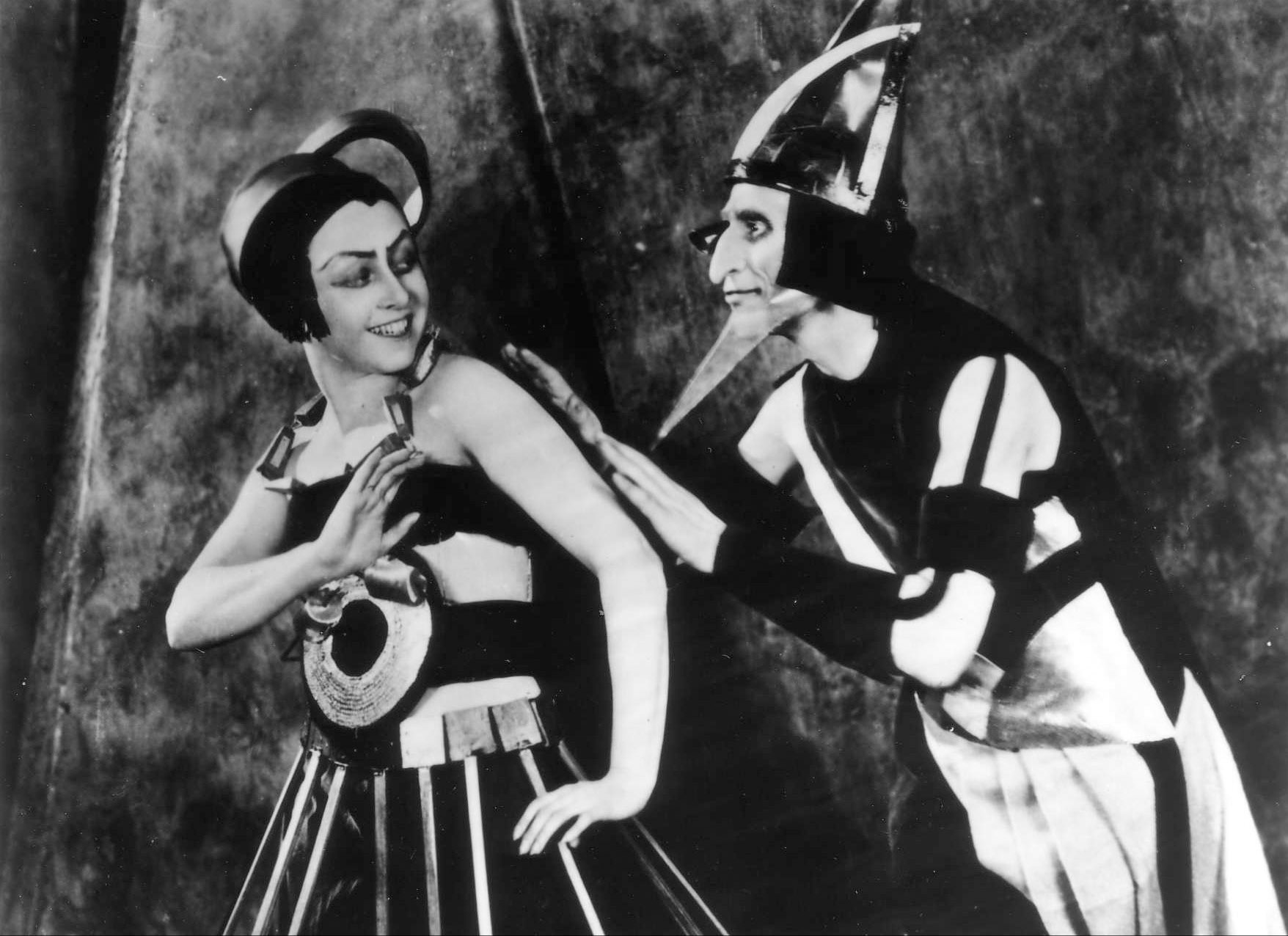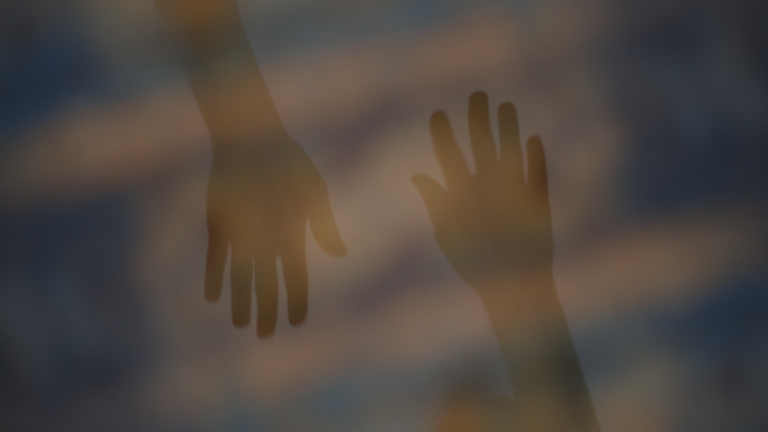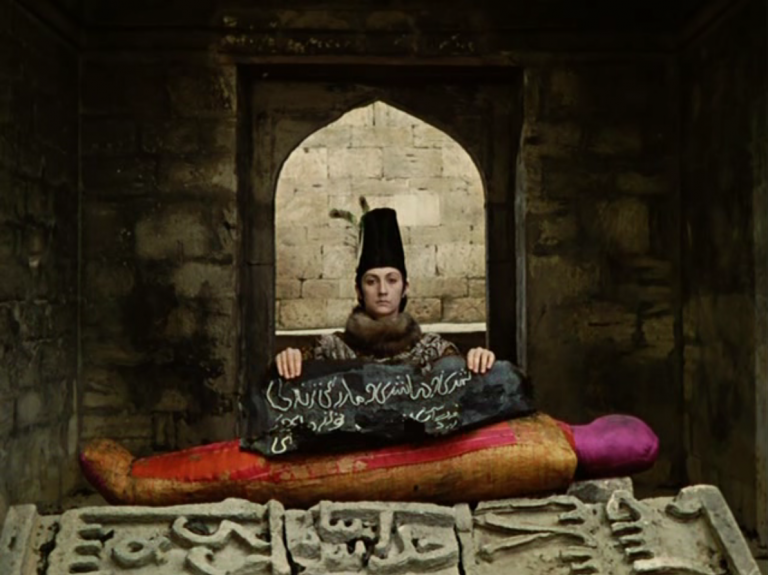“I WANTED TO GO RIGHT BACK TO SOME OF THE EARLIEST FILMS WHICH USED SWEEPING FABRICS OR TRANSFORMING GARMENTS AS A KIND OF VISUAL ATTRACTION.”
On the transformative nature of dress: Fashion in Film Festival
"Dress is very close to the body, it is evocative and also an intensely personal thing because it connects with memories. It is a great story-telling device." - Marketa Uhlirova, founder of the Fashion in Film Festival
Fashion and time are at the heart of this year’s Fashion in Film Festival (11th- 26th of March). From Alain Resnais’ Last Year in Marienbad and unseen footage of Inferno by Henri-Georges Clouzot, to Roger Vadim’s Barbarella and Hitchcock’s Hollywood classic Vertigo, the festival will explore how fashion unravels through time. Tomorrow, the accompanying exhibition opens in the Window Gallery at Central Saint Martins, a perfect opportunity to talk to Marketa Uhlirova, founder and co-curator of the festival.
What is the most important connection between fashion and film for you?
In recent years I have been interested in the ways in which the two interact to create something unique. Fashion is inherently a visually attractive form but it is also very tactile. And the moving image can magnify its qualities in certain specific ways – in ways that can’t be imitated by any other medium. Film can lend fashion a new emotional dimension. But there are also obvious similarities: clothes are all textures and surfaces, and so is film. The two can come together. One of the talks we have commissioned (from Alistair O’Neill and Inga Fraser) will look closely at an iconic performance piece from 1973 by the British artist Annabel Nicolson, Reel Time. In it she interconnected a celluloid film projection with a sewing machine, in physical space and real time.
You have talked about the importance of movement in both fashion and film…
One thing that strikes me about a lot of film costume studies is that dress is almost always analysed as a static image, as if it was a photograph or museum object. What so often gets forgotten is that anything in film is expressed in motion and time, that audience perceives it through a temporal experience. I dedicated our 2010 ‘Birds of Paradise’ festival season to the idea of costume as cinematic spectacle – I wanted to highlight that costume in film behaves in certain ways, that it is not a static form. It performs on a mechanical level but also an optical one – its metallic surfaces catch light and make it glimmer, its patterns can be superimposed in intriguing ways. Chronologically, I wanted to go right back to some of the earliest films which used sweeping fabrics or transforming garments as a kind of visual attraction. And it’s this quality of mutability associated with movement and changing angles that make costume so appealing. But now I am beginning to think that time is equally as important to how we consider dress in the moving image. It is an aspect that we underplayed in the past and I thought it deserved more attention. So in ‘Wearing Time’, Tom and I have been trying to hone in on questions about what the peculiar relation between fashion, film and time is exactly – how does filmed dress unravel in time? How exactly do dress and film come together to articulate time? How do they guide or confuse our sense of time?
Have you thought of time in terms of Chronos or Kairos? Can you explain aspects of the next festival that relate to each of them?
[To the ancient Greeks, Chronos described time in a chronological sense. Kairos indicated the subjective experience of living within time.]
Both. Chronos is very present in the cinematic chronologies of fashion – a bit of a leitmotif in the silent era which maybe coincides with modern fashion becoming more of a mass attraction, more publicly visible but also more assertive as a creative design discipline. There are many short films of the 1910s and 20s which present a ‘history’ of dress, always ending with the modern moment. In an inverse way, you could also say these films plot history through a sequence of costumes. The idea of chronos is also important in films which trace a particular garment’s own history, as you see in process, industry or training films, or documentary feature films about clothing manufacture. There is a wonderful WWII ‘propaganda’ film we want to show, In Which We Live: Being the Story of a Suit Told by Itself (1943), which is narrated from the viewpoint of a suit and the suit tells you about how ‘he’ was cared for and meticulously maintained and eventually remade into kids clothes in the spirit of make-do-and-mend. Then there are fiction films that take a single garment as an excuse to weave a web of seemingly disparate stories or lives. Then there is the chronology of the future – films like Things to Come (1936) and Ikarie XB-1 (1963) ask what multiple points in the future will look like in terms of architecture, design and dress. And they make us ask, what do these ideas of future ‘progress’ tell you about the values of the time in which they were conceived?
But many of the films in our programme work against any neat sense of chronology, of time as a sequence of events in the sense of progression. They use various devices of returns, visions, dreams, premonitions. Dress is very close to the body, it is evocative and also an intensely personal thing because it connects with memories. It is a great story-telling device. I dare say most of us own a garment or jewel that has some kind of sentimental value for us or embodies a memory. My great uncle had an old, well-worn trilby with a small hole in it and when I was little he used to tell us it was a bullet hole, that he was shot at with the hat on. To this day I have no idea if the story was true or not. I mean, a garment is an ideal accomplice in helping us hold onto a memory, and for messing with our sense of time and reality. It can make you aware of time, bring you into a time, sometimes very sharply, even physically. Since you asked about Kairos – the meaning of time which is even harder to pinpoint than Chronos – this is something we address in our ‘present’ strand. Our sense of being in time and our awareness of time can be heightened, and also evoked through film, in the experience of wearing or making clothes, or composing a look – they can be very pleasurable and sensual experiences.
“A GARMENT IS AN IDEAL ACCOMPLICE IN HELPING US HOLD ONTO A MEMORY, AND FOR MESSING WITH OUR SENSE OF TIME AND REALITY. IT CAN MAKE YOU AWARE OF TIME, BRING YOU INTO A TIME, SOMETIMES VERY SHARPLY, EVEN PHYSICALLY.”
Do you discover something new every festival?
If I didn’t, what would be the point of doing it? For me curating is about asking questions and plotting the stories you are going to tell. Naturally, in the process you stumble upon lots more new questions and unlock new routes and new ways of looking – and I find that really exciting.
And what have you learnt from your collaboration with Tom?
I have loved every minute of working with Tom. I have such immense admiration for his work, which I first encountered in a class on video art with John Hanhardt when I was at Bard College back in the day. In fact, the idea of the hard-to-define magic that fashion in film sometimes produces, the ‘enigma’ of our very first festival title in 2006, was somewhat influenced by Tom’s idea of ‘attractions,’ though at the time I wanted to find another way to talk about it, I felt the term was a bit overexposed. In any case, I approached Tom last year and was delighted that he agreed to work on this with me. I think we complement each other. Tom generally comes at things from the cinema perspective – obviously, he is not only an erudite cinema historian but also a committed cinephile. I love film too, of course, but in this project my perspective has been to really emphasise the fashion side of things – having worked on the festival for 10 years, I can draw on a large reservoir of films on or about fashion, and often these are documentary shorts, commercials, newsreels… And I have kept reintroducing concerns that fashion has with time – its cycles, its relationship to the immediate future and past, the immediacy, the ‘nowness,’ of the industry today…
How would you describe your approach to curating film?
I think we are a curious cross-over between a festival and an exhibition. When we started the festival in 2006 (with Christel Tsilibaris and Roger K. Burton), we purposely called ourselves curators rather than programmers. It was not to be pretentious (and of course the word has a whole other meaning today when it is beginning to implode); we wanted to make a point that the process of programming film was worthy of the kind of close, critical attention that contemporary art receives in exhibitions (Christel and I trained as contemporary art curators but happened to love film). We felt the usual approach of just drawing up a film checklist against a pre-defined framework was not so stimulating, whether you are programming Wong Kar-wai’s films, avant-garde cinema or seminal science fiction films. While these are all valid approaches – and certainly, very accessible – I think they also hold you back from asking some of the really interesting questions, or making interesting connections that can be provoked by different kinds of frameworks.










